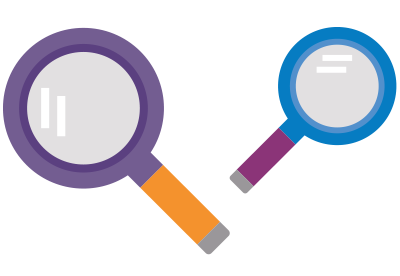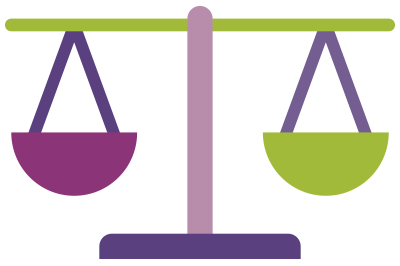Osteopathy Board of Australia
2015/16 Annual Report Summary
At a glance: Regulating osteopaths in 2015/16
This annual report summary provides a snapshot of our work regulating more than 2,000 registered osteopaths in the financial year to 30 June 2016.
A more detailed profile, encompassing data relating to all 14 National Boards in Australia, is published in AHPRA and the National Boards’ 2015/16 annual report
657,621 health practitioners in 14 professions registered in Australia in 2015/16
2,094 registered osteopaths
This is 0.3% of the registrant base

Registration grew by 4.7% from 2014/15

54% women
46% men

1,759 registered students; up 47.9%1

207 new applications for registration received

185 criminal history checks were carried out for osteopaths, resulting in:
15 disclosable court outcomes;
No regulatory action needed to be taken.
14 notifications (complaints or concerns)2 were lodged with AHPRA about osteopaths

9 notifications were closed3

12 complaints were made about possible statutory offences relating to osteopathy services
25 statutory offence matters were closed
Note:
- Compared with 2014/15.
- This figure refers only to matters managed by AHPRA. For total notifications received about the profession, including matters managed by the Health Professional Councils Authority (HPCA) in NSW, please refer to Table 4.
- This figure represents complaints managed and closed by AHPRA, and excludes matters managed by the HPCA.
About this report
This report provides a profession-specific view of the Osteopathy Board of Australia’s work to manage risk to the public and regulate the profession in the public interest in 2015/16.
The Board has worked in close partnership with the Australian Health Practitioner Regulation Agency (AHPRA) to provide all Australians with a safe, qualified and competent workforce under the National Registration and Accreditation Scheme (the National Scheme).
Information included in this report is drawn from the data published in the 2015/16 annual report by AHPRA and the National Boards, and was correct as at 30 June 2016.
Whenever possible, historical data are provided to show trends over time, as well as comparisons between states and territories.
For a wider context, and to compare the profession against national data from all 14 professions regulated by National Boards under the National Scheme, this report should be read in conjunction with the 2015/16 annual report. Download the report.
Message from the Chair, Osteopathy Board of Australia
The Osteopathy Board of Australia is committed to protecting the health and safety of the community by ensuring that only those practitioners who are suitably trained and qualified to practise as osteopaths are registered.
In 2015/16, we focused on implementing our core functions, which include:
- registering practitioners and students
- developing and reviewing standards, codes and guidelines
- handling notifications, complaints, investigations and disciplinary hearings
- registering overseas-trained practitioners via two pathways, and
- approving accreditation standards and accredited courses of study.
The Board assesses risk through available data, and focuses on reducing risk of harm to the public. Setting appropriate professional standards for the profession is an important part of this. Five revised registration standards were approved by Ministerial Council in 2015/16, and the Board approved revised guidelines for continuing professional development.
The Board’s delegate, the Registrations and Notifications Committee (RNC), makes decisions about notifications about osteopaths except where there are co-regulatory arrangements in New South Wales (NSW) and Queensland. In 2015/16, the Board started a 12-month trial of conducting the RNC on the same day as the Board meeting.
We appreciate the dedicated work of the Australasian Osteopathic Accreditation Council (AOAC) in ensuring that practitioners have the knowledge, skills and professional attributes necessary to practise the profession in Australia, whether registrants are qualified in Australia or overseas. This includes delivering its core function of assessing programs against the standards, and accrediting and monitoring osteopathy courses, and extends to the assessment of overseas practitioners for practice in Australia through the competent authority and standard pathways.
We are very fortunate to rely on the hard work and support of AHPRA staff in all aspects of our work. I wish to acknowledge Board members’ contribution to the regulation of osteopathy, and their continuing professionalism and unrelenting enthusiasm.

Dr Nikole Grbin
Chair, Osteopathy Board of Australia
Members of the National Board in 2015/16
- Dr Nikole Grbin (Chair)
- Dr Anne Cooper
- Dr Pamela Dennis
- Ms Judith Dikstein
- Mr Robert McGregor AM
- Ms Liza Newby
- Dr Natalie Rutsche
- Adjunct Associate Professor Philip Tehan
- Dr Andrew Yaksich
During 2015/16, the Board was supported by Executive Officer Cathy Woodward.
More information about the work of the Board, including codes, guidelines and information on registration standards, can be found on the Board website.
Message from the Agency Management Committee Chair and the AHPRA CEO
Since the National Scheme began six years ago, AHPRA has worked in partnership with the National Boards to ensure that the community has access to a safe and competent health workforce across 14 registered health professions Australia-wide.
We rely on the expertise and insights of the National Boards to make decisions about the 657,621 health practitioners currently registered in Australia in the interests of the Australian public. It’s a role that Board members commit to with dedication and passion, and the community can be assured that its safety is always their number-one priority.
As at 30 June 2016, there were 2,094 registered osteopaths. Overseeing the registration and regulation of the profession is the Osteopathy Board of Australia, with valuable input from professional and community groups.
The Board upholds the values of the National Scheme by taking a risk-based approach to regulatory decision-making and policy implementation, with a continued focus on finding ways to improve effectiveness, efficiencies and timeliness.
In 2015/16, the Board published five revised registration standards and priortised communicating these changes to the profession to ensure that osteopaths were kept up-to-date with regulatory requirements.
We’d like to thank Board members for their continued commitment to ensuring a competent and flexible health workforce that meets the current and future health needs of the community.
We look forward to continuing to work in partnership with the Board.

Mr Martin Fletcher,
Chief Executive Officer

Mr Michael Gorton AM,
Chair, Agency Management Committee
Year in review: Osteopathy Board of Australia
In 2015/16, the Board continued to commit to ensuring the public has access to safe and competent health services from registered osteopaths by publishing revised core registration standards.
With approval from the Ministerial Council, in 2015/16 the Board published five revised core registration standards:
- continuing professional development
- criminal history
- English language skills
- professional indemnity insurance, and
- recency of practice.
The revised standards are posted on the Board’s website.
Communicating the changes to the profession was a priority throughout the year, and the Board informed registrants of the changes in newsletters and with a well-attended webinar. We held two meetings with the Board of Directors of Osteopathy Australia in Melbourne, with a focus on changes to the registration standards, the 2016 audit and exchanging planning information.
A video has been developed by the Board which outlines what graduates need to do before they can register and practise as osteopaths, and how to renew their registration each year thereafter. The Board has also published a presentation, Osteopathy registration: what you need to know, which expands on the information presented in the video. These are available for the public and practitioners to download from the Board’s website.
The Chair also presented on these topics to final-year students in the osteopathy programs.
In June 2016, the AOAC started a review of the Standard Pathway Assessment. The Standard Pathway includes formal written and clinical examinations, and has been one option for overseastrained osteopaths to seek registration in Australia since 2011.
The Board has continued to conduct its business of regulating the profession with increasing efficiency, allowing it to reduce the national registration fee for 2015/16 through improvements such as committee structures. We continue to work towards ongoing efficiencies.
Stakeholder and co-regulatory relationships also continue to be a focus for the Board, and include biannual teleconferences and meetings with the UK and New Zealand osteopathy regulators on issues of mutual interest.
Data snapshot: Regulation at work in 2015/16
The profession in brief
- The osteopathy registrant base grew by 4.7% year on year, to 2,094 in 2015/16.
- Victoria was the principal place of practice for the majority of these practitioners (1,109); the Northern Territory (NT) was home to the fewest (3).
- The age bracket with the most practitioners was 25–29 (420 registrants).
- 65 practitioners were under 25 years of age; six were 80 or over.
- Women comprised 54% of the profession.
About our data
Data in this Board summary are drawn from the 2015/16 annual report, published by AHPRA and the National Boards. Data relating to osteopaths have been extracted from national source data that include all 14 health professions currently regulated under the Health Practitioner Regulation National Law as in force in each state and territory (the National Law).
In the following pages you’ll find registration data, including registrant numbers by division, age and principal place of practice, as well as data about notifications (complaints or concerns) received about osteopaths in the financial year to 30 June 2016. Data about statutory offence complaints are also included.
For a further breakdown of data from the 2015/16 annual report by AHPRA and the National Boards, including data on other professions and summary reports by state and territory, go to the 2015/16 annual report.
Notifications data
Notifications are complaints or concerns that are lodged with AHPRA about registered health practitioners or students practising in Australia.
Our data generally excludes complaints handled by co-regulatory jurisdictions, such as in:
- NSW, where complaints about health practitioners with this state as their principal place of practice (PPP) are not managed by the Board and AHPRA, unless the conduct occurred outside NSW. Complaints about health practitioners where the conduct occurred in NSW are handled by the Health Professional Councils Authority (HPCA) and the Health Care Complaints Commission (HCCC), and
- Queensland, where complaints are received and managed by the Office of the Health Ombudsman (OHO) and may be referred to AHPRA and the relevant National Board. We are not able to report on all complaints about health practitioners in Queensland because we only have access to data relating to matters referred to us by OHO.
Note that some NSW regulatory data published in this report may vary from data published in the HPCA’s annual report. This is due to subsequent data review by the HPCA after submission of initial data to AHPRA. For more information about how complaints about health practitioners are managed in NSW, and for data about complaints made in the state, please refer to the HPCA website.
For data relating to complaints in Queensland that have not been referred to AHPRA, please refer to the OHO website.
Registration of osteopaths
As at 30 June 2016, there were 2,094 osteopaths registered across Australia. This represents a national increase of 4.7% from the previous year.
Osteopaths made up 0.3% of all registered health practitioners across the National Scheme. Of the registrant base:
- 96.5% held general registration to practise osteopathy, with this cohort of registrants increasing by 5.4% from last year.
- 0.4% held provisional registration and were undertaking a six-month period of supervised practice while in the Competent Authority Pathway for UK-trained osteopaths. This helps them progress towards being eligible for general registration. This cohort of registrants decreased by 52.9% this year.
- 3.2% held non-practising registration and could not practise osteopathy. This is the same proportion of registrants as last year.
There were 1,759 registered osteopathy students at the end of the year; an increase of 47.9%.
The Board received 207 new applications for registration; an increase of 0.5% on 2014/15. Of the new applications, 78.7% were for general registration and 13.5% were applying to move to the non-practising register.
See Tables 1–3 for segmentation of registration data about osteopaths.
As a standard part of the registration process, applicants for initial registration as a health practitioner in Australia must undergo a criminal record check. AHPRA requested 66,698 domestic and international criminal history checks for practitioners across all professions in 2015/16. Of these, 185 checks were carried out for practitioners wanting to register as osteopaths. The checks resulted in 15 disclosable court outcomes. No conditions or undertakings were imposed on any practitioner’s registration as a consequence.
For registration information across all regulated health professions, refer to the 2015/16 annual report by AHPRA and the National Boards.
Regulation of osteopaths
Twenty-three notifications were received nationally about osteopaths (including HPCA data) in 2015/16. This represents an increase of 76.9% from last year. The number of matters received and managed by AHPRA in 2015/16 was 14 (excluding HPCA); nine more than last year. Notifications about osteopaths represent 0.2% of all notifications received by AHPRA (excluding HPCA) this year.
On a national basis, the percentage of registered health practitioners with notifications received during the year was 1.5%. The percentage of all registered osteopaths with notifications received this year was 1.1%.
There were no immediate actions taken on any osteopath’s registration within AHPRA and the Board’s jurisdiction in 2015/16 or 2014/15. For immediate action cases managed by the HPCA in NSW in 2015/16, please refer to the Osteopathy Council of NSW Annual Report 2015-16.
Nine notifications relating to a registered osteopath (excluding HPCA) were closed during the year. This represents 0.2% of all matters closed across all professions. Of the closed notifications, 100% resulted in no further action being taken by the Board. No further action is taken when, based on the available information, the Board determines there is no risk to the public that requires regulatory action.
Six notifications about registered osteopaths (excluding HPCA) were open at the end of June 2016.
There were 10 active monitoring cases (including HPCA), with most (seven cases) relating to monitoring provisional registration requirements for suitability/eligibility.
Twelve new complaints about possible statutory offences relating to osteopathy were received this year. These complaints constitute less than 0.9% of all statutory offence matters received in 2015/16. All new matters related to the use of protected titles or advertising concerns. Twenty-five statutory offence matters were considered and closed.
Statutory offences are breaches of the National Law, committed by registered health practitioners and unregistered individuals. There are a number of offences created under the National Law, including the following:
- unlawful use of a protected title
- performing a restricted act
- holding out (claims by individuals or organisations as to registration), and
- unlawful advertising.
See Tables 4–10 for segmentation of notifications, active monitoring and statutory offence data relating to osteopaths.
Want to know more?
For all National Boards’ data, please refer to the full 2015/16 annual report and supplementary data tables published by AHPRA and the National Boards on the annual report website.
Segmentation of data by state and territory is also available on the AHPRA website.
For more information on the National Law as it applies to each state and territory, see AHPRA's legisltaion.
Note:
- Blank fields in all tables denote zeros.
- No PPP (principal place of practice) includes practitioners with an overseas address.
| Osteopaths | U-25 | 25-29 | 30-34 | 35-39 | 40-44 | 45-49 | 50-54 | 55-59 | 60-64 | 65-69 | 70-74 | 75-79 | 80+ | Total |
|---|---|---|---|---|---|---|---|---|---|---|---|---|---|---|
| 2015/16 | 65 | 420 | 416 | 393 | 265 | 154 | 101 | 112 | 87 | 49 | 15 | 11 | 6 | 2,094 |
| 2014/15 | 88 | 387 | 417 | 358 | 251 | 133 | 102 | 100 | 89 | 38 | 22 | 10 | 5 | 2,000 |
Note:
- No PPP (principal place of practice) includes practitioners with an overseas address.
Note:
- Data relating to notifications (complaints or concerns) are based on the state or territory of the practitioner’s PPP (principal place of practice).
- The number of matters referred to AHPRA and the National Board by the Office of the Health Ombudsman (OHO).
- No PPP includes practitioners with an overseas address.
- Matters managed by the Health Professional Councils Authority (HPCA) in NSW.
- For 2015/16, notifications are based on the practitioner’s PPP.
- Prior to this, notifications were based on the state or territory where the notification was handled (Responsible Office).
Note:
- Health Professional Councils Authority.
- No PPP (principal place of practice) includes practitioners with an overseas address.
- For 2015/16, notifications are based on the practitioner’s PPP.
- Prior to this, notifications were based on the state or territory where the notification was handled (Responsible Office).
Note:
- No PPP (principal place of practice) includes practitioners with an overseas address.
- Matters managed by the Health Professional Councils Authority (HPCA) in NSW.
- For 2015/16, notifications are based on the practitioner’s PPP.
- Prior to this, notifications were based on the state or territory where the notification was handled (Responsible Office).
| Stage at closure | Total 2015/16 | Total 2014/15 |
|---|---|---|
| Assessment2 | 9 | 4 |
| Investigation | 2 | |
| Tribunal hearing | 1 | |
| Total | 9 | 7 |
Note:
- Excludes matters managed by the Health Professional Councils Authority (HPCA) in NSW.
- Closed after initial assessment of the matter.
Note:
- Excludes matters managed by the Health Professional Councils Authority (HPCA) in NSW.
- No further regulatory action is usually taken when, based on available information, the Board determines there is no risk to the public that meets the legal threshold for regulatory action. It may also be because a practitioner has taken steps to voluntarily address issues of concern.
Note:
- AHPRA reports by stream, rather than registrants being monitored, because a registrant may have restrictions (conditions or undertakings) in more than one stream. For example, nationally, 4,963 cases monitored by AHPRA relate to 4,861 registrants.
- AHPRA performs monitoring of compliance cases for ‘suitability/eligibility’ stream matters for NSW registrations.
Note:
- This table captures offence complaints by principal place of practice (PPP) and includes all offences from sections 113–116 of the National Law, not only offences about advertising, title and practice protection.
- AHPRA also receives offence complaints about unregistered persons where there is no PPP recorded. Only registered practitioners have a designated PPP.
- Based on state and territory of the practitioner’s PPP.